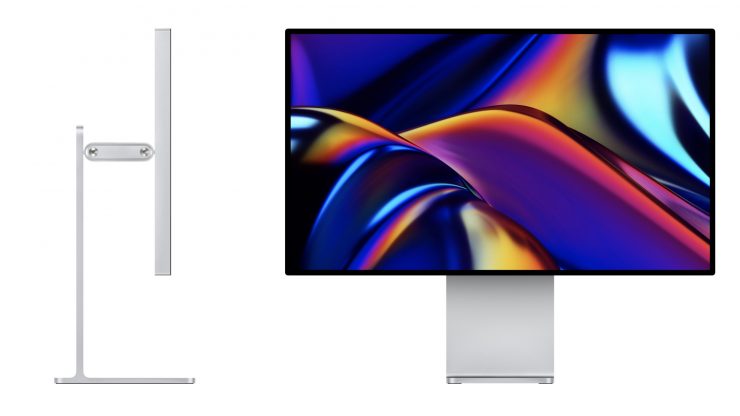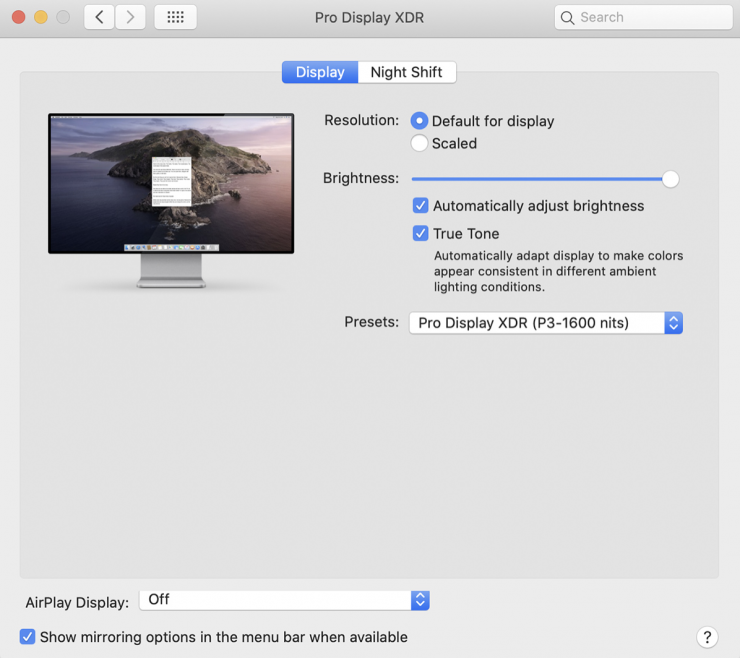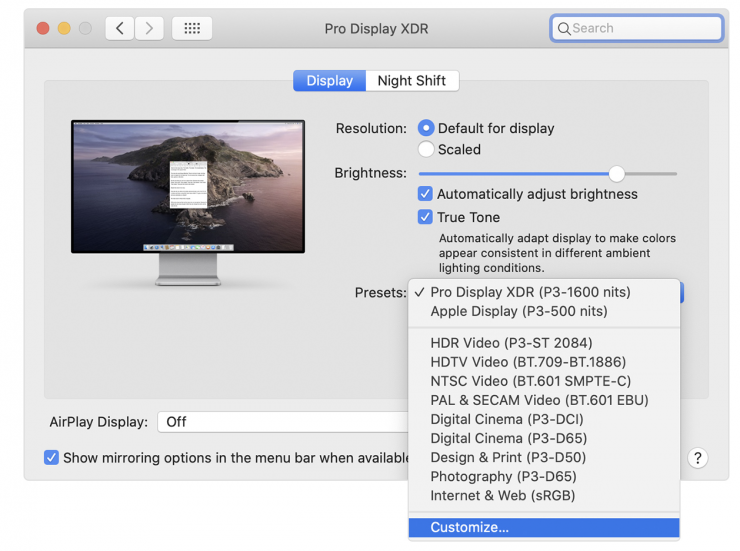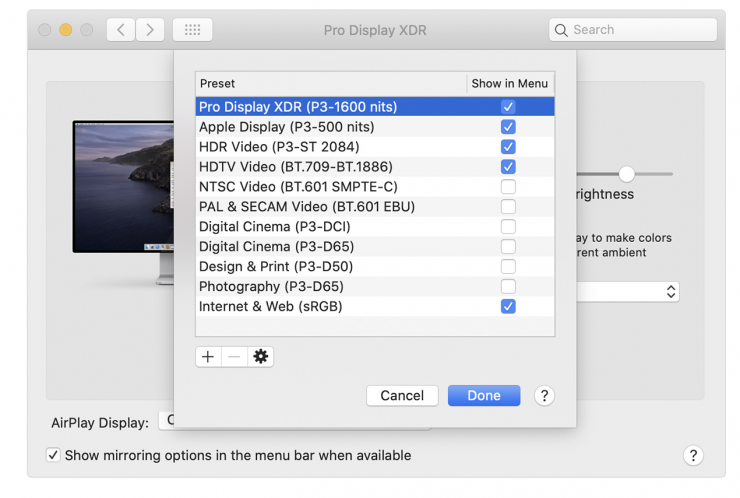
Apple added specific reference modes to its Pro Display XDR that are designed to cover typical content creation workflows across several media types.
What is interesting is that you can also create custom reference modes that are specific to your needs if you are dealing with a particular type of workflow.
If you are interested in seeing how the Pro Display XDR compares to a Sony BVM-HX310 reference monitor, you can see Vincent from HDTVTest comparison above. Now, I can’t independently verify any of Vincent’s claims, so please make sure you watch a wide range of Pro Display XDR videos.

You can use the reference modes included with Pro Display XDR to match the production requirements of HDR, HD, SD video, and other media types. Each reference mode sets the color space, white point, gamma, and brightness on your display.
Pro Display XDR (P3-1600 nits)
Use this mode for general home and office environments. This mode is based on the wide color P3 primaries used by Apple displays and includes Extreme Dynamic Range (XDR) support up to 1600 nits (peak).
Apple Display (P3-500 nits)
Use this mode for general home and office environments. This mode is based on the wide color P3 primaries and supports a brightness range of up to 500 nits typical of Apple built-in displays.
HDR Video (P3-ST 2084)
Use this mode for 4K or ultra high-definition video production workflows up to 1000 nits (full-screen sustained) using the wide color P3 primaries and the high-dynamic-range SMPTE ST-2084 EOTF. This mode is designed for controlled viewing environments set up per ITU-R BT.2100.
HDTV Video (BT.709-BT.1886)
Use this mode for high-definition video production workflows targeting the ITU-R BT.709 and BT.1886 recommendations. This mode is designed for controlled viewing environments set up per ITU-R BT.2035.
NTSC Video (BT.601 SMPTE-C)
Use this mode for standard-definition or archival video production workflows targeting the ITU-R BT.601 recommendation and SMPTE-C color primaries. This mode is designed for controlled viewing environments set up per ITU-R BT.2035.
PAL and SECAM Video (BT.601 EBU)
Use this mode for standard-definition or archival video production workflows targeting the ITU-R BT.601 recommendation and EBU Tech 3213 color primaries. This mode is designed for controlled viewing environments set up per ITU-R BT.2035.
Digital Cinema (P3-DCI)
Use this mode for motion picture and post-production workflows using the P3 theatrical color space and digital cinema whitepoint. This mode is designed for controlled viewing environments set up per SMPTE RP 431-2:2011.
Digital Cinema (P3-D65)
Use this mode for motion picture and post-production workflows using the P3 theatrical color space with the D65 whitepoint. This mode is designed for controlled viewing environments set up per SMPTE RP 431-2:2011.
Design and Print (P3-D50)
Use this mode for graphic design, printing, and publishing workflows. This mode uses wide color P3 primaries for a wider color gamut than a typical sRGB display. Instead of D65, it uses the D50 whitepoint typically used to evaluate the color of printed output in line with ISO 3664:2009 and ISO 12646:2015 specifications.
Photography (P3-D65)
Use this mode for typical digital photography workflows. This mode uses wide color P3 primaries with the D65 whitepoint typically used for screen-based viewing and is designed for appropriately set up and controlled viewing environments.
Internet and Web (sRGB)
Use this mode for content creation workflows targeting the web or other internet-based uses. This mode uses the broadly supported sRGB (IEC 61966-2-1:1999) color space per the W3C CSS Color Module Level 3 recommendation and is designed for appropriately set up and controlled viewing environments (64 lux is recommended).
Customized reference modes
Advanced users can create customized reference modes tailored to unique workflow needs by selecting from several color gamut, white point, luminance, and transfer function options. Learn more about the advanced options you can configure for customized reference modes.
How to choose a reference mode
There are two ways to switch between reference modes on your Mac:
Choose Apple menu > System Preferences, then click Displays. Choose the Presets pop-up menu, then choose a reference mode.
- Click the AirPlay menu in the menu bar, then choose a reference mode.
- If you don’t see the AirPlay menu, go to Apple menu > System Preferences, click Displays, then select “Show mirroring options in the menu bar when available.”
- Choose favorite modes
- You can choose which reference modes appear in Displays preferences and the AirPlay menu:
Choose Apple menu > System Preferences, then click Displays.
Click the Presets pop-up menu, then choose Customize.
Select the reference modes that you want to use, then click Done.
- Create a custom reference mode
- Choose Apple menu > System Preferences, then click Displays.
- Click the Presets pop-up menu, then choose Customize.
- Click the Add button, then customize the settings for your reference mode.
Enter a name and description for your reference mode, then click Save Preset.
Import and export custom reference modes
Choose Apple menu > System Preferences, then click Displays.
Click the Presets pop-up menu, choose Customize, then do either of the following:
- To import a reference mode, select the Action menu, choose Import, select the file that you want to import, then click Open.
- To export a reference mode, choose a reference mode, select the Action menu, choose Export, then click Save.







